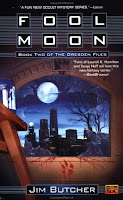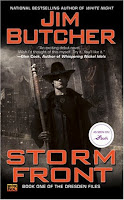A delightful new Christmas novella from Connie Willis. Some aliens (inaccurately dubbed the Altairi) have landed in Colorado, but no one has been able to figure out how to communicate with them. They have such an air of disapproval ("like great aunt Judith") that the people working with them keep moving on to other projects. Which is why the narrator, a newspaper columnist who once wrote about aliens, is included in the group. Meg makes for a very amusing narrator, and she's one of the ones who finally figures out the aliens. Near the beginning of the story, the aliens have been taken to a mall to see if they respond to anything, and they suddenly sit down. Meg enlists the aid of a choir director there with middle school girls, the only one who noticed that the aliens sat down in response to a Christmas song playing in the mall, and they sat down exactly in time with the title words. Together, Meg and Mr. Ledbetter begin to puzzle out which songs the Altairi respond to and why, and finally figure out what the aliens were waiting for.
This is a delightfully humorous take on both alien invasion type of stories and Christmas stories. Early on, Mr. Ledbetter calls Meg frantic that she not let the aliens listen to any other carols, since there are all kinds of dark and dangerous verbs sprinkled through them, and they don't know what the Altairi might start doing. It's obvious that Willis is pretty well-versed in her Christmas carols and has thought about this before-- including the "Satan's power" in "God Rest Ye Merry Gentlemen" that G. loves to do in a dark sinister voice. The answer, when it comes, is perfectly logical and makes great sense-- and makes you wonder what intelligent, wise aliens would think of humanity if they came to visit (turning them into a media circus, claiming they are there to support a particular religion, everyone trying to use it for their own ends).
The first part of the story is available online, but I warn you-- if you read it, you will probably do like I did and find yourself needing to buy a copy of Asimov's so you can finish the story.
| Title: | All Seated on the Ground |
|---|---|
| Author: | Connie Willis |
| Date published: | 2007 (in Asimov's Science Fiction December 2007 issue) |
| Genre: | Christmas Science Fiction |
| Number of pages: | 44 |
| Notes: |
































